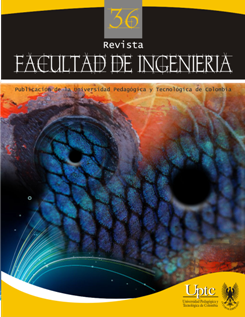Sistema energéticamente eficiente y de bajo costo para controlar la temperatura y aumentar el oxígeno en estanques de cultivo de alevines de tilapia roja

Abstract
El artículo expone un sistema automático para controlar la temperatura y aumentar el oxígeno en estanques de cultivo de alevines de tilapia roja en la granja John Jairo González, del Politécnico Colombiano Jaime Isaza Cadavid. El control se realiza a través de un PLC que recibe dos señales de temperatura ubicadas en puntos diferentes del estanque, y una señal de un sensor de nivel. Ejecutando un algoritmo de control, activa o desactiva diferentes circuitos de agua fría, proveniente de la quebrada Guaracú, o caliente, a través de un proceso de bombeo de agua del estanque hacia los colectores solares, y regresándola al estanque, recirculación que se hace hasta obtener una temperatura de 29 °C, un poco por encima de la ideal de 28 °C. El sistema de control es validado comparando temperatura y oxígeno con un tanque sin control.